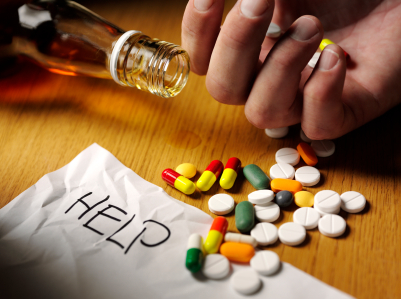
Use of prescribed drugs to treat alcohol addiction
Drugs to Treat Alcohol Addiction
NOTE: Even if Alcohol addiction is not suspected, stopping drinking alcohol can have serious side-effects including seizure. People who regularly drink should consult a doctor before ceasing. Medications are available to help with withdrawal. The most serious sysmptoms may not be experienced until 24-48 hours after ceasing alcohol consumption.
Craig
Alcohol-dependent patients might require medically prescribed drugs to help them in the initial stages of treatment or/and to prevent relapses.
The main types of drug used in the treatment of alcohol addiction are:
Detoxification
Chlordiazepoxide: Chlordiazepoxide is indicated for the management of alcohol withdrawal. It is a benzodiazepine used for the short-term (2-4 weeks) symptomatic treatment of severe and disabling anxiety, which is a common symptom during the withdrawal period. It is contraindicated in case of myasthenia gravis, severe respiratory insufficiency, sleep apnoea and severe hepatic insufficiency.
Other benzodiazepines such as alprazolam are also indicated for anxiety, but like other benzodiazepines only when the disorder is severe, disabling or subjecting the individual to extreme distress.
Detoxification from alcohol dependence using another sedative such as benzodiazepines follows the same principle as detoxification from nicotine dependence using nicotine replacement or from opioid dependence using methadone or buprenorphine. However, in the treatment of patients dependent on alcohol or other sedatives, appropriate detoxification is particularly critical because the sedative withdrawal syndrome is potentially life-threatening.
Preventing relapse
Acamprosate is used to prevent relapse in recovering alcohol-dependent patients. Acamprosate is a synthetic analogue of taurine (a non-essential amino acid). It appears to restore the normal activity of glutaminergic neurons, which become hyperexcited as a result of chronic alcohol exposure*. Over the past two decades, the safety and efficacy of acamprosate for alcohol dependence have been well established in multiple double-blind, placebo-controlled trials. Patients treated with acamprosate report a significantly greater rate of complete abstinence, longer time to first drink, and increased duration of cumulative abstinence when compared with placebo. Reports indicate that acamprosate is effective in combination with counselling. It is contraindicated in cases of renal insufficiency or severe hepatic failure.
Disulfiram: A patient taking disulfiram who drinks alcohol will suffer severe nausea and vomiting. The effect of disulfiram is primarily due to irreversible inactivation of liver ALDH. In the absence of this enzyme, the metabolism of ethanol is blocked and the intracellular acetaldehyde concentration rises. The high levels of acetaldehyde are partly responsible of the symptoms of the disulfiram-alcohol reaction. However, disulfiram will not have any effect on the system if it is not mixed with alcohol. This drug is only used in extreme cases and its success depends on the client’s willingness to keep taking the drug. Disulfiram is contraindicated in the presence of decompensated cardiac disease, severe hypertension, psychoses.
Naltrexone: Naltrexone is indicated for use in alcohol dependence to reduce the risk of relapse, support abstinence and reduce alcohol craving. It also reduces the feeling of intoxication if a person does relapse while taking the drug. Both naltrexone and acamprosate should be taken as part of a comprehensive addiction recovery programme. These drugs only deal with physical symptoms and do not treat the psychological causes of addiction. Naltrexone is contraindicated in case of acute hepatitis or liver failure as well as in patients who have a positive screen for opioids.
* Whereas the acute administration of alcohol and sedatives increases γ-aminobutyric acid (GABA) and decreases glutamate activation, the reverse occurs with chronic exposure, generating a GABA deficiency state and glutamate hyperactivity that increases the risk of seizures during withdrawal.
References:
1- Helping patients who drink too much. A clinician’s guide. Updated 2005 Edition. U.S. Department of Health and Human Services. National Institutes of Health. National Institute on Alcohol Abuse and Alcoholism.
2- Campral EC. Summary of Product Characteristics. May 2007.
3- Antabuse. Summary of Product Characteristics. September 2007.
4- Nalorex. Summary of Product Characteristics. September 2009.